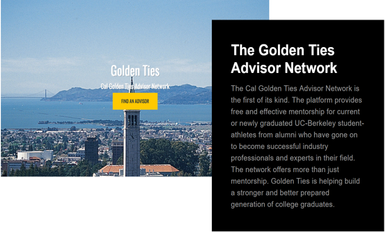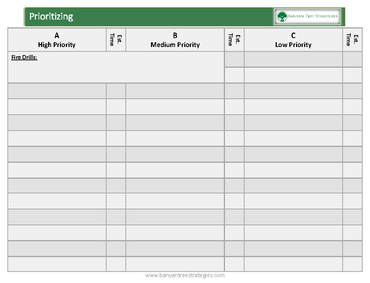|
Prioritizing, Publishing, Mentoring Most of the summer vacations have now concluded and the rapid pace of fall meetings and events are right around the corner. We heard many tales of great summer trips and experiences and we hope you were able to use the longer days to recreate yourself and reflect on what matters most to you and your closest relationships. We enjoy sharing our learning every 45 days with you in the hopes of stimulating interesting discussion between us, and potentially between you and others. In this edition of Branches and Roots: - We analyze how constraints develop your skills - How LinkedIn can help you amplify your career even when you have a great job - What being a mentor can do for the second half of your career. Got A Template For That? Building off the great reaction we received from our post on productive solitude we started to notice that in many of our work conversations we were asking leaders how they were organizing their thinking and in what format. Were they using a computer, a phone, a note pad, or a bound notebook? When did they collect themselves and organize? Who did they share it with, and how did they share it? The answers were all over the board, and many didn’t really have a system in place. They offered up that they are bouncing around trying whatever the newest form of technology has to offer. We also noticed that many leaders thought that the idea of sharing what they are doing to be a big enabler for productivity, however, that wasn’t really playing out as they thought. It was leading to more emails and more confirmations on non-mission critical tasks. Does this sound familiar? Enter in the concept of a template as a way to create boxes waiting to be filled in with answers that challenge you to prioritize your thinking. An individual benefits by working with a task allocation template like the one below. The act of not just writing down your tasks, but prioritizing them, and then estimating the time it will take to complete the task has a calming effect. It gets your to-do’s out of your brain. Once you have written down your tasks you can then share it with others. If you are the manager of others, consider using this template as a tool to help them develop their own way of thinking on how they are allocating their time. There are plenty of smart people who are horrible at allocating their time, and it is hard to coach them on this without appearing overbearing. Asking them to complete the template will give you a window into what they think is most important and could foster some healthy dialogue around their choices. Constraints have long been used by athletic coaches to help players practice longer, and to develop a certain piece of the puzzle. When we are helping someone with their putting in golf we often have them putt with just their right or left hand to increase their awareness of a specific part of the stroke. Similarly, having a direct report complete the above template could build awareness around the importance of allocating their time tied into their team's needs relative to their own. The Long Tail Game and How LinkedIn is Helping You Build Your Brand It was front page news in 1982 when IBM announced it was laying off employees, the security of lifetime employment with Big Blue was in doubt. The undertone to others was this meant that almost no private sector employee was safe. From moments like that 35 years ago to today, the idea of a personal brand and its cultivation have been forming. You, the individual, have the ability to create what the brand marketers will define as a 'promise wrapped up in an experience' and LinkedIn has been building a platform for your brand since its founding in 2002. In the last five years LinkedIn has not only been a great place to store all of your contacts, it is a great place to share your thoughts and perspectives. In a business world where almost all employment contracts are “at-will” (which means you are working week to week at the whim of your boss), it is increasingly important to have a place to share what you have to offer an industry or marketplace. There are several key actions to consider when it comes to publishing on LinkedIn. The first is to share what others have posted and add your comments. This is easy lifting and benefits the person who created the original content. The second is to set up a writing schedule and some topics you like to cover and start sharing your own thoughts. This content will live online for a long time, and can be referenced by you on other websites. The power of written content for your career has a very long tail. The most recent development from LinkedIn is the ability to share a video. While this may seem like the last thing any of us want to do, it will have an impact on how we learn, and what we expect when meeting new professionals. If you were looking to hire someone and they had a short clip about themselves, it could be of great use to see how they communicate and handle themselves in front of a camera. Two generations removed from 1982 the relationship between corporations and individuals has evolved into a measured marriage. Individuals now have the option of creating and maintaining a professional store front on LinkedIn, a place to store not only contacts but their work product. You own your career and we see LinkedIn as a valuable partner.  Allowing Wisdom To Rise Having a trusted friendship with a person years older or younger than you is a true gift. We often refer to these non-familial connections as mentors or mentees. The roots of the word go back to ancient Greece when Mentor who was a friend of Odysseus was entrusted with the education of Odysseus' son Telemachus. Relationships that are strong have certain elements that help them build. Affinity, time, shared experiences all are ingredients. One of the outcomes from a strong cross generational relationship is that it can allow the subtle gift of wisdom to present itself. When wisdom arrives it means the mentor has built up enough trust with the younger party to share their best insights and perspective. Often times this can be life changing for the mentee. Yet for all its benefits, great mentors are in short supply. Why is this? It may have something to do with the all-important shared experiences. The generations don’t always do things together, and thus it is hard to form the bonds. Technology hasn’t helped. Then there is the hubris of youth always thinking there has to be a better way than it was done in the old days. We share this as a preamble to what we think is a great new mentoring system that has been built by the team at Instaviser. It is an internal mentoring engine that institutions can use to allow the younger generation to connect with the alumni. We were introduced to it through our involvement with Cal Athletics. Instaviser branded Cal’s system with the name Golden Ties and Drew was asked to be a mentor. On several occasions a Cal student-athlete was able to find Drew’s profile on the password protected site and book a 30 mentoring session. In both situations the common connection of having gone to Cal was enough to allow an easy conversation to ensue, and the beginnings of a relationship were born. The student-athlete had questions about work and job opportunities, and I was able to offer some thoughts and people for them to meet. So many of our work and nonprofit institutions have a treasure trove of wisdom locked up in the minds of its elder participants. We will all benefit as it is transferred to younger generations. Hopefully solutions like the one Instaviser has built will gain traction inside the institutions you care about, and we will be able to pass down the principles and values to tomorrow’s leaders. If you have an interest in being a mentor on any topic, please email us here and we will do our best to get you connected with the right team.
0 Comments
Leave a Reply. |
Archives
November 2023
Categories
All
Complete Annual Newsletter Volumes
|


